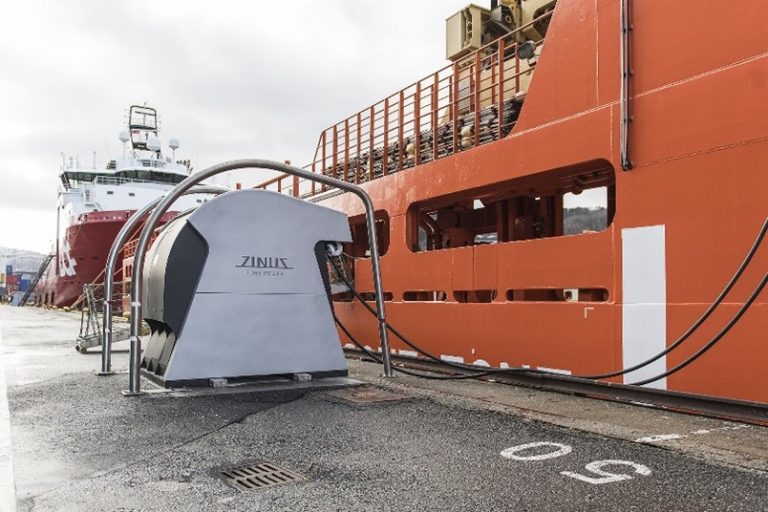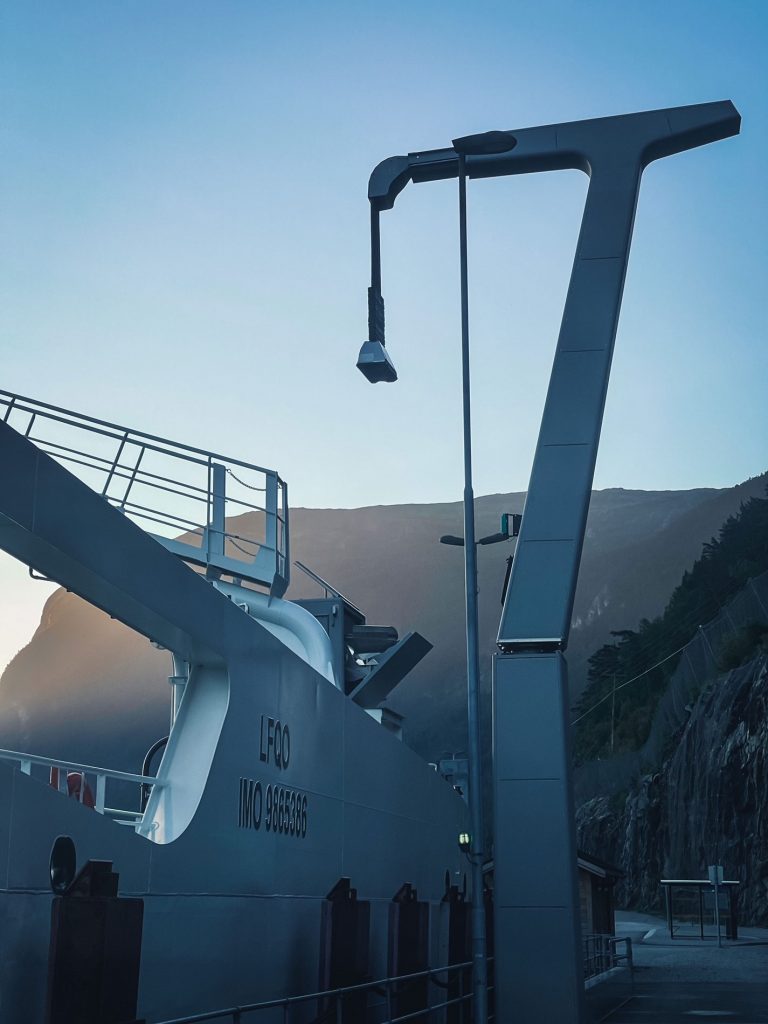
When you think of Norway, the first thing that comes to mind is probably the impressive landscapes that this country in northern Europe has to offer: rugged mountain ranges and deep valley gorges, high plateau glaciers, impressive coastlines – and above all countless fjords. Every day, ships and ferries anchor in the inlets that extend inland, transporting people and goods by water and – depending on the purpose of the transport – docking for longer or shorter periods at the quays of the individual harbours. And that brings challenges, especially for the environment.
Most ships and ferries are still fuelled by heavy fuel oil or diesel. This is responsible for almost three per cent of global CO₂ emissions worldwide and also contains large quantities of sulphur as a residue from oil processing. In 2022, the global maritime transport sector emitted around 710 million tonnes of greenhouse gases, to which Europe contributes an estimated 129,000 tonnes per year. Added to this are the emissions of soot and nitrogen oxides. This balance alone causes shipping to be criticised. However, watercraft also need to cover their electricity requirements. Until now, the power supply in the harbour has often been ensured by keeping the ship’s engines running. However, this causes CO₂ and pollution that could actually be avoided – even at smaller harbours and berths. So it is hardly surprising that the measures are no longer a long time coming: From 2026 – according to the Norwegian government’s decision – cruise ships travelling into the fjords will no longer be allowed to produce emissions. There is also new legislation for the major EU harbours: from 2030, all combustion processes on quays will be banned.


Electricity instead of fuel
Such challenges require think tanks and clever minds who are working on new ideas, products and solutions. Like ZINUS AS, for example. The Norwegian company has anticipated the European Union’s decision with foresight: The new legislation stipulates that diesel engines may no longer continue to run while docked in order to protect harbour waters, fjords and seas. At the same time, however, this means that ships and ferries will have to cover their electricity needs in other ways when they dock. ZINUS AS is developing innovative solutions for supplying power to watercraft in harbours. By using electricity instead of fuel when docking, the solutions contribute to more environmentally friendly harbour operations and a significant reduction in emissions from ships in harbours.
But how does the more sustainable shore power get to the ship or boat? This is possible with Zinus Port Power, for example. The shore power solution from the pioneering Norwegian company can be seamlessly integrated into various harbour environments. The main advantage of the shore power connection is the simplified cable handling and ship connection process: Using the charging solution, the cable can be lowered to the deck from above via a tower or via the ship’s railing. Accordingly, a special cable jointly developed by LAPP, the leading provider of integrated solutions and branded products in the field of cable and connection technology, and ZINUS is essential to the solution. It is not only used within the shore power solution, but also in other cable management systems for harbour power.

Special cable for harsh harbour conditions
Previous shore power solutions required the cable to be manually unwound from a drum and pulled along the quay with a great deal of effort and wear. As a result, only a few ships were converted to the new technology and for a long time only a few harbours had shore power systems at all. Added to this is the swell, which sometimes moves the ships considerably, and the difference between high and low tide, which can be several metres – all challenges that both companies had to take into account when developing the shore power solutions. “With Zinus Port Power, we are taking a big step towards sustainability,” says Endre Eidsvik, CEO of ZINUS AS.
ZINUS not only offers the compact Power Port, but also so-called tower solutions. Their special feature: the towers can rotate 180 degrees and automatically adapt to tidal changes of up to 10 metres. “However, this also required an innovative cable that fits perfectly with our designs,” explains Eidsvik. “In LAPP, we found a partner who could offer us exactly this solution: A cable that can withstand high current voltages and has a very small bending radius, while at the same time it has to be very flexible and as light as possible.” The application in the harsh harbour environment also required a cable that could withstand extreme climatic conditions and high mechanical loads. These include UV radiation, very low temperatures and contact with salt water.
In collaboration with ZINUS, LAPP developed the so-called Highflex for this application, which lives up to its name. “Our colleagues at LAPP accepted the challenge we presented them with and developed exactly what we needed,” says Eidsvik. The result of the collaboration is an innovative, lightweight, very flexible and high-quality cable that can be easily handled and connected to the vessel by any crew member. Boats and ferries can now be connected to the shore power supply within minutes using the charging solution. It must be able to withstand high currents.
LAPP inventiveness for customised solutions
As the cable hangs down from the tower in a “loose arc”, it cannot break off even in rough tidal waters or strong ship movements. The space-saving design of the entire solution makes shore power available both in small harbours and at large industrial quays. “Finding innovative solutions for customer-specific challenges – that’s what LAPP is all about,” summarises Matthias Lapp, CEO of the Lapp Group. “They reflect the inventive spirit that has always been deep in our LAPP DNA. At the same time, they also show what great results are possible with the right partners.”
Following the successful collaboration between LAPP and ZINUS, the Norwegian company developed a third, autonomous charging station solution. Its column automatically moves into the correct position above the ship, lowers the connector and automatically connects it to the ship’s junction box. The entire procedure takes just 20 seconds and is therefore particularly suitable for ferries with electric drives whose batteries need to be charged quickly and efficiently. As far as further cooperation between ZINUS and LAPP is concerned, both companies want to tackle further sustainable projects in the future and are certain: “Det passer som hånd i hanske1.
A supply of shore-side power solutions such as the one from ZINUS AS is the future of shipping and –
beyond the legal requirements – essential for harbours that want to reduce their ecological footprint. Norway is a European pioneer when it comes to shore power and is introducing this environmentally friendly form of power supply across the board. The ships and ferries whose engine systems need to be converted or replaced will gradually follow suit. In this way, the idea of clean shipping in the Norwegian fjords and, bit by bit, in international waters is slowly becoming a reality.
1Literally: It fits like a hand in a glove. Figuratively: It fits like a glove.
